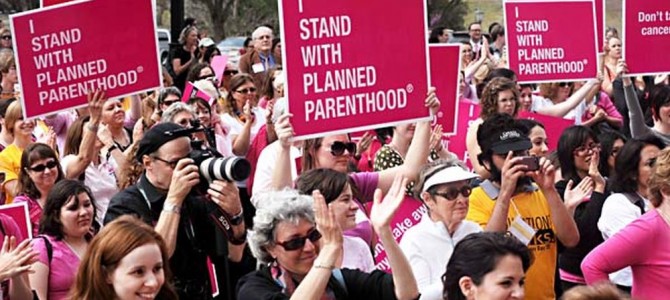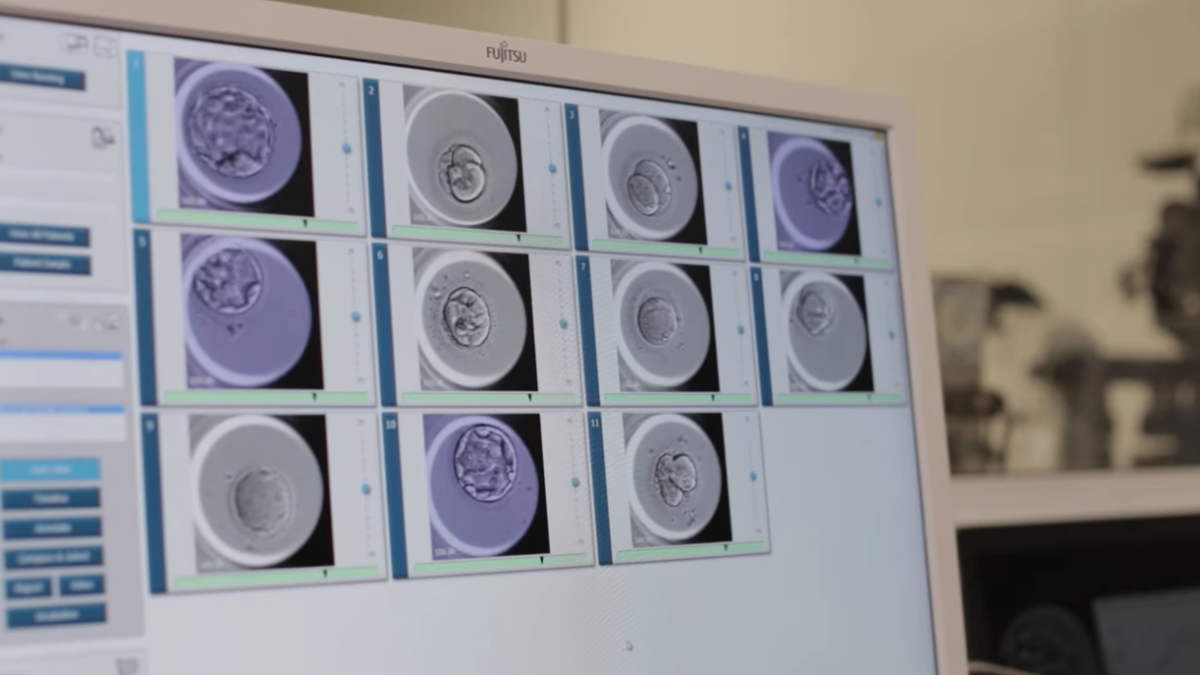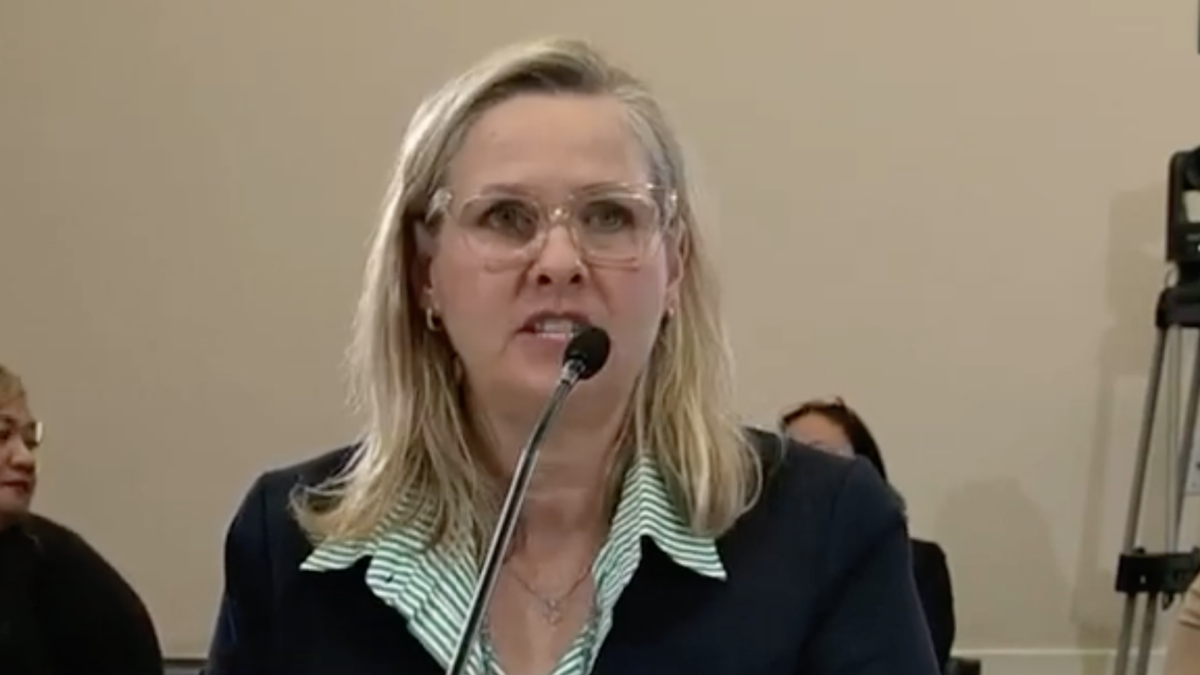
New York State just passed a gruesome law that legalizes abortions up to and including the point of birth. A bill in Virginia, supported by Democratic Gov. Ralph Northam, would have apparently legalized the killing of just-born infants. The pro-life movement needs to strike back, and the U.S. Department of Health and Human Services (HHS)—part of President Donald Trump’s executive branch—is the vehicle through which to strike that blow.
Late last year, it was reported that the Trump administration’s HHS was launching a review of the federal government’s funding of fetal tissue research using the remains of aborted babies. The National Institutes of Health (NIH), part of HHS, spent $103 million on fetal tissue research in 2018.
As part of the review, an audit is being conducted to determine the extent fetal tissue is used in government research by government scientists. NIH researchers were told to pause orders of fetal tissue, and the Food and Drug Administration (FDA) was told to cancel a contract with a fetal tissue provider. In this case, the fetal tissue was being used by the FDA to develop “humanized mice”—by placing human cells obtained from aborted human tissue into mice—for testing.
Non-government scientists’ use of taxpayer money for fetal tissue research is also being examined. A project by the University of California, San Francisco (UCSF), which sought to develop humanized mice in an attempt to find a cure for HIV, was put on hold as well—but only after pro-lifers raised awareness about that contract.
After complaints from researchers who depend on these funds, HHS is now saying that the UCSF contract has not been officially cancelled, as the audit is still ongoing. Worse, the rules pausing fetal tissue research only apply to government scientists, not the tens of millions of dollars in taxpayer-funded grants received by those who are not directly employed by the government.
Right now, cutting taxpayer funding to non-government scientists is not even being considered. The NIH has promised to put $20 million toward finding alternatives to fetal tissue, but the implication is that the use of aborted human remains will continue for the foreseeable future.
That’s why the bureaucrats in HHS have been able to calm the researchers’ fears. Brett Giroir, the HHS assistant secretary for health, has reportedly assured non-government scientists dependent on these funds that the money would continue. NIH director Francis Collins has allegedly said that fetal tissue research would remain “a mainstay.” That is unacceptable.
Fetal Tissue Research Is Not Necessary
Scientists complain that there is no other viable option for research aside from aborted fetal tissue, but a wrong to (allegedly) do good is still a wrong. Despite what those making money off of fetal tissue say, the effectiveness of using fetal tissue for research is still open for much debate.
It doesn’t help that proponents of fetal tissue research routinely make false claims about efficacy. In but one example, they say that fetal tissue was used to develop vaccines for diseases such as polio and measles. But these vaccines were developed using animal cells, not fetal tissue. Proponents also say fetal tissue is necessary for research on the Zika virus and other brain diseases, but fetal tissue is rarely used in such research, and has yet to be proven to be at all better than ethical options.
That’s why instead of just an audit of contracts for fetal tissue research undertaken by government scientists, the taxpayer funding used by non-government scientists needs to be thoroughly examined as well. How many serious breakthroughs have occurred through the use of “humanized mice”? So far, adult stem cells have led to serious medical breakthroughs. The use of “humanized mice” has not.
Common sense best practices would require us to not just take the scientists’ and universities’ word for it. They are receiving money to do fetal tissue research; their jobs depend on the practice continuing. It shouldn’t be taboo to point out these researchers and universities’ clear conflict of interest.
Scientists might also say that the abortion has already happened, so fetal remains might as well be put to some use. Aside from the ethical problems with this argument, the truth is that fetal tissue research operates as a backdoor subsidy to the abortion industry.
Fetal Tissue Research Subsidizes the Abortion Industry
Two factors make fetal tissue highly profitable for the abortion industry. In 1973, Roe v. Wade said that abortion was such a fundamental constitutional right that states were almost completely unable to regulate the abortion industry. Abortion clinics were often dirty and not up to code, and fetal remains were routinely discarded in the trash or sent down a sink’s disposal.
But states’ ability to regulate abortion changed with Planned Parenthood v. Casey in 1992. Even though Casey upheld the “right” that Roe v. Wade created to have an abortion, Casey parted with Roe by allowing states to regulate and provide oversight of the abortion industry for the first time.
The vast majority of states have strict rules about medical waste that apply to abortion clinics. If not for a fetal tissue market, abortion clinics would have to use a medical waste company. Human remains can’t be run down the disposal, at least in most states. But many medical waste companies, for public relations reasons or otherwise, are reluctant to work with Planned Parenthood or other abortion providers. AEither way, paying a medical waste company to dispose of the fetal remains is an additional cost for Planned Parenthood. That’s the first factor.
The second factor is that many clinics do not use an ultrasound during an abortion. For example, using no ultrasound is common practice at Planned Parenthood, the nation’s largest abortion provider, in order to cut costs and speed up the abortion process. Because no ultrasound is used during the procedure, clinic workers must piece through fetal remains after the procedure to ensure that no pieces of the baby were inadvertently left in the mother.
In other words, clinics are already cataloging and sorting aborted babies’ remains. Saving and storing the remains for the local tissue broker or university to come and pick up is an easy, almost cost-free last step. That means that when Planned Parenthood or other abortion providers can harvest fetal tissue, not only does this remove the problem of paying disposal costs, it brings in cash. That directly boosts the profit for each procedure.
Nonprofit or not, Planned Parenthood—at the clinic or franchisee level—is very cost sensitive. And abortion provides the biggest boost to clinics’ bottom lines, which goes directly to employee bonuses and the like. A rough estimate is that Planned Parenthood affiliates’ profit margin from abortion is between 20 and 40 percent. That means that, historically, and even including donations as clinic revenue, up to half of clinics’ revenue after costs comes from abortion. In Planned Parenthood’s last reported year, once donations and bequests to affiliates are backed out, it is likely that almost the entirety of clinics’ revenues after costs come from abortion.
A Lucrative Add-On
Selling fetal tissue is a lucrative add-on for clinics. Contracts that pay clinics for fetal tissue vary depending on who is buying the tissue (a broker, or a research institution directly) and the local market. Planned Parenthood Los Angeles was paid by fetal tissue broker Novogenix $45 per “specimen.” But Planned Parenthood Gulf Coast (located in Texas) was paid between $150 and $200 per fetal remain by the University of Texas Medical Branch.
Assuming only half of Planned Parenthood’s almost 333,000 abortions in 2017 went to fetal tissue research, and assuming each of these only paid $50 per aborted baby, that’s an added $8.3 million that goes straight to franchisees’ bottom line. Instead of bringing in $500 in revenue, an abortion that is used for fetal tissue research brings in at least $550. That’s a 10 percent increase in revenue per abortion with no added cost, which goes directly to affiliates’ profits. Obviously, the amount of aborted remains that are sold is probably more than half, and clinics often receive more than $50.
That’s why fetal tissue research is such a good gig for Planned Parenthood and other abortion providers. Instead of having to pay for the disposal of fetal tissue, which would dent the profit margin from providing abortions, the abortion industry is paid by the fetal tissue research industry to dispose of their waste. Federal law prohibits paying more than cost for fetal tissue, but a big part of the “benefit” to the abortion industry is not having to pay for fetal tissue disposal.
Pro-lifers need to pressure the Trump administration. Congress specifies some NIH funds, but much of the funding NIH receives is discretionary. NIH gets a lot of funding, generally, for stem cells and tissue research, but NIH chooses to use that for baby body parts—to the tune of over $100 million per year.
There is no reason that Secretary of Health and Human Services Alex Azar, appointed by President Trump and voted for by Republicans in the Senate, cannot cut that funding off. Too many scientists believe they should have unfettered research access without any imposition of boundaries, and their public universities too often take an “ends justify the means” approach and behave as if they are autonomous. And they happen to make money off it.
That’s wrong. This practice is scientifically dubious, subpar compared to ethical methods of research, and operates as a backdoor subsidy to the abortion industry. It’s time to end it in America.









